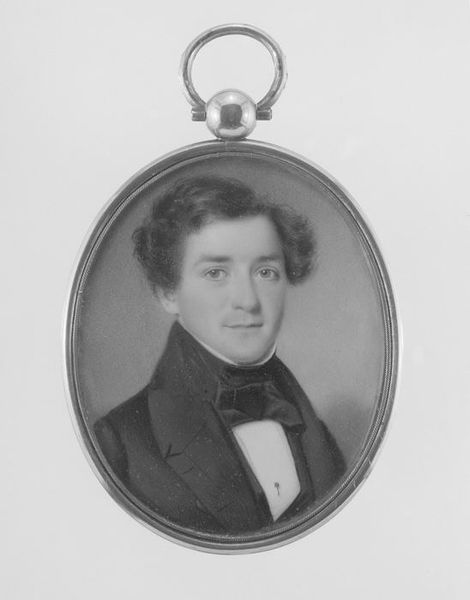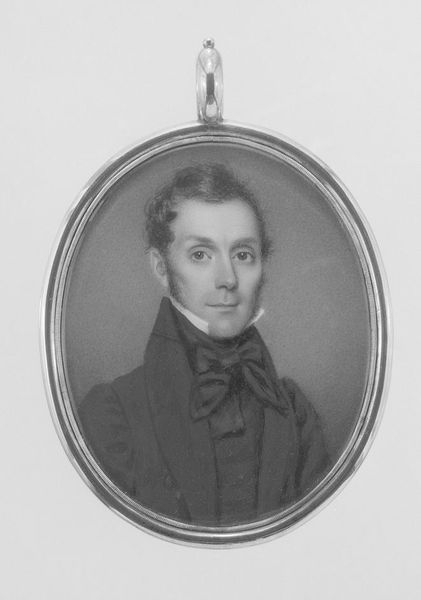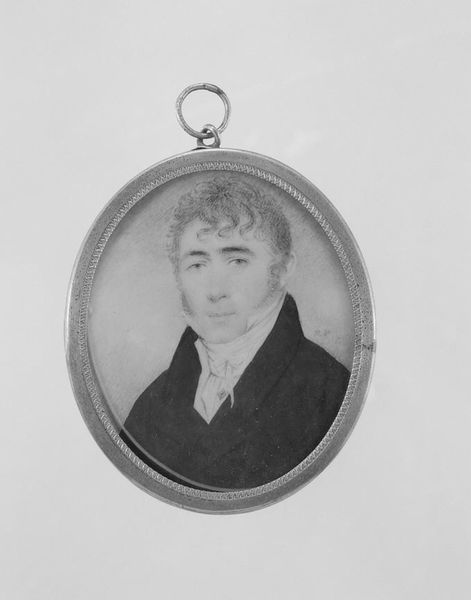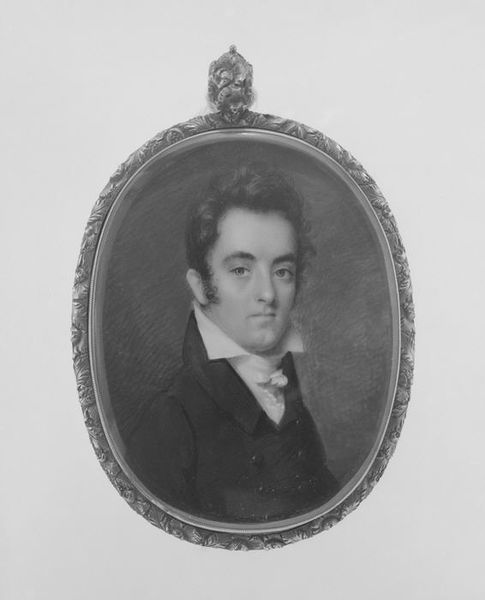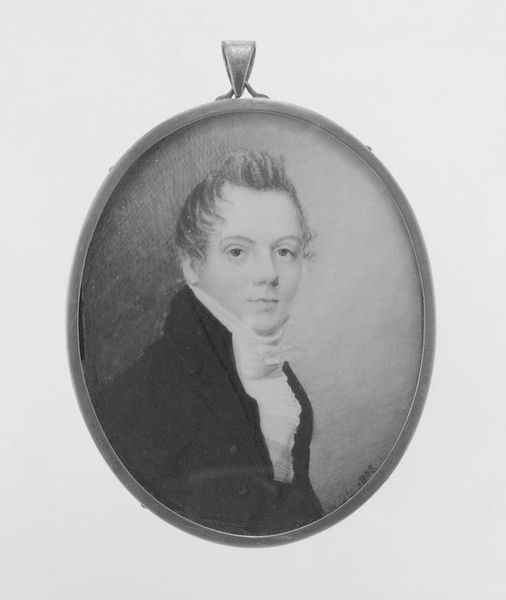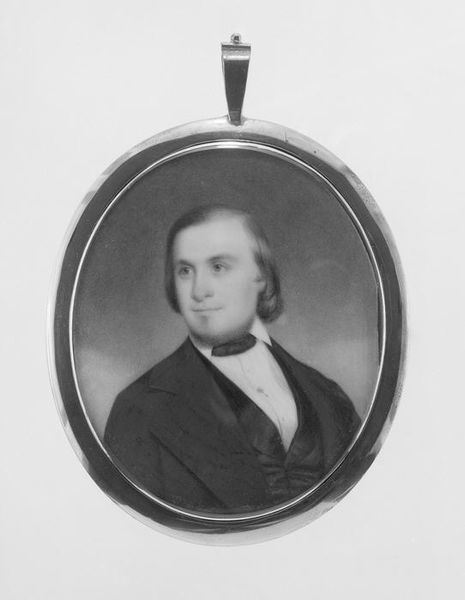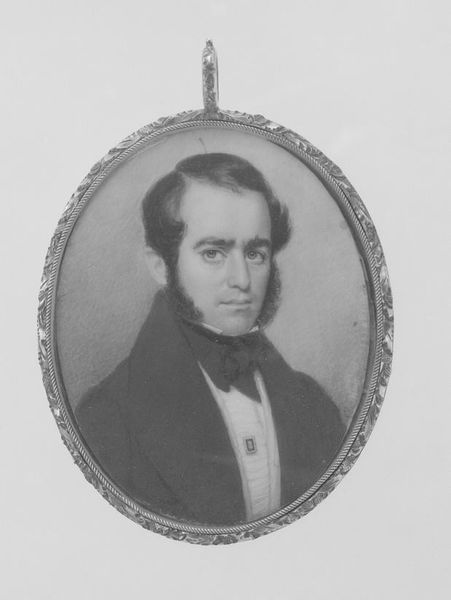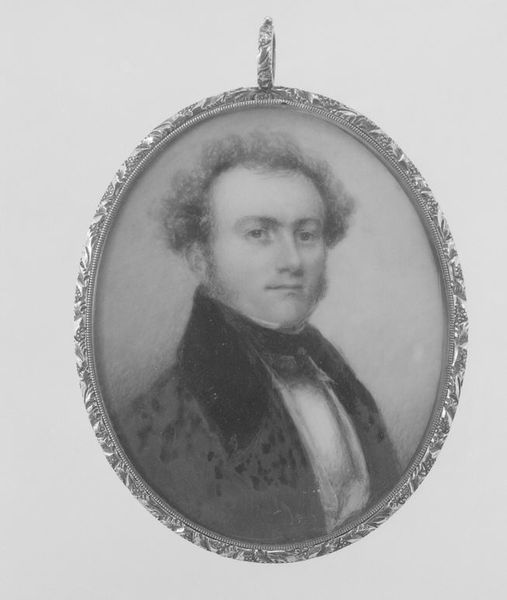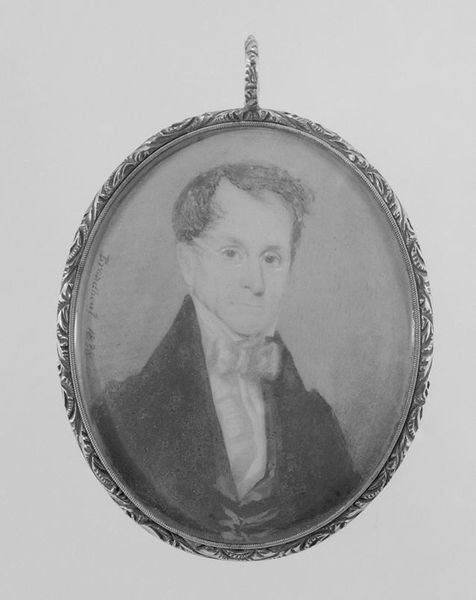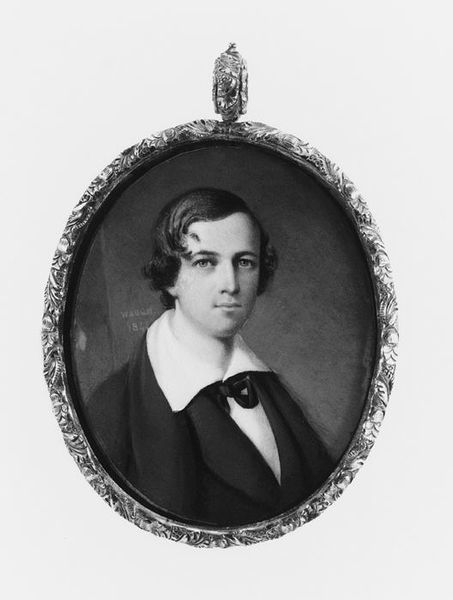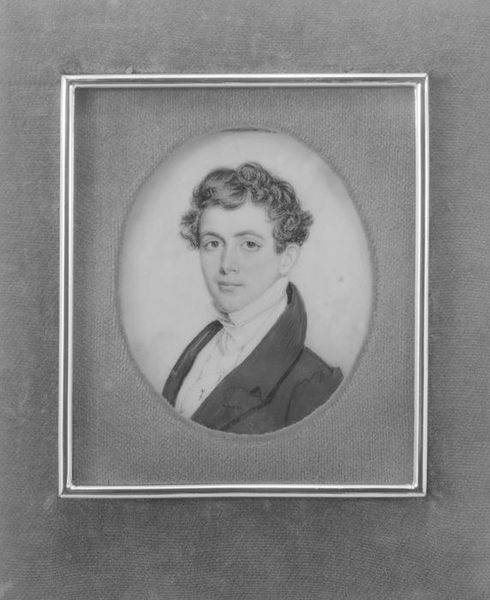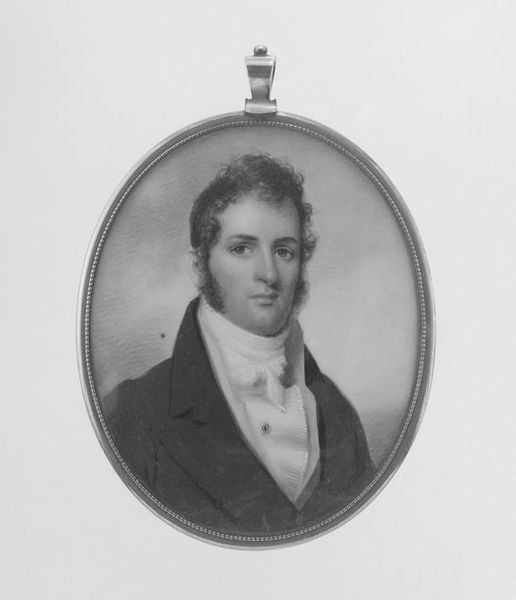
tempera, painting
#
portrait
#
tempera
#
painting
#
romanticism
#
black and white
#
monochrome
Dimensions: 2 9/16 x 2 1/16 in. (6.5 x 5.2 cm)
Copyright: Public Domain
Editor: This is "Charles Leland," painted in 1822. It's a tempera painting. The muted tones give it a very somber feel. What stands out to you? Curator: It's fascinating to consider the economic and social context surrounding a work like this. Think about the materials – tempera, typically pigments bound with egg yolk. What does using that instead of, say, oil paint tell us about available resources and the artist's position within the art market? Who was the patron commissioning this work, and what did *they* value? Editor: That's a great point, I hadn’t thought about the tempera as a conscious choice driven by resources. It makes me think of the craftsmanship, rather than just the artistic vision. Was tempera painting very common at this time, and might this portrait represent a revival, or perhaps something less costly for the customer? Curator: Precisely! We can’t divorce art from the material realities of its creation. Think about the division of labor involved – did the artist prepare the pigments himself, or was that work outsourced? Each step has social implications, from material sourcing to consumption and display. Also, considering this miniature as a form of commodity, meant for display but also for exchange, adds another layer. Who could afford a portrait made of tempera in 1822, and how does that influence the way the subject is portrayed? Editor: I’m now wondering about its size. Being a miniature, it’s much more closely linked to jewelry and craftsmanship than monumental artworks from the same period. So, you’re saying, analyzing the ‘how’ and ‘why’ of production reveals a network of social connections? Curator: Exactly. We must question what materials do, how they are worked, and how they circulate within a given economy. This piece is less about some timeless truth, and more a product of specific historical and economic forces. Editor: That’s completely changed how I view this portrait! Thanks. Curator: Indeed. Analyzing materiality moves our focus toward the human activities behind the creation, appreciation, and life of a painting.
Comments
No comments
Be the first to comment and join the conversation on the ultimate creative platform.
